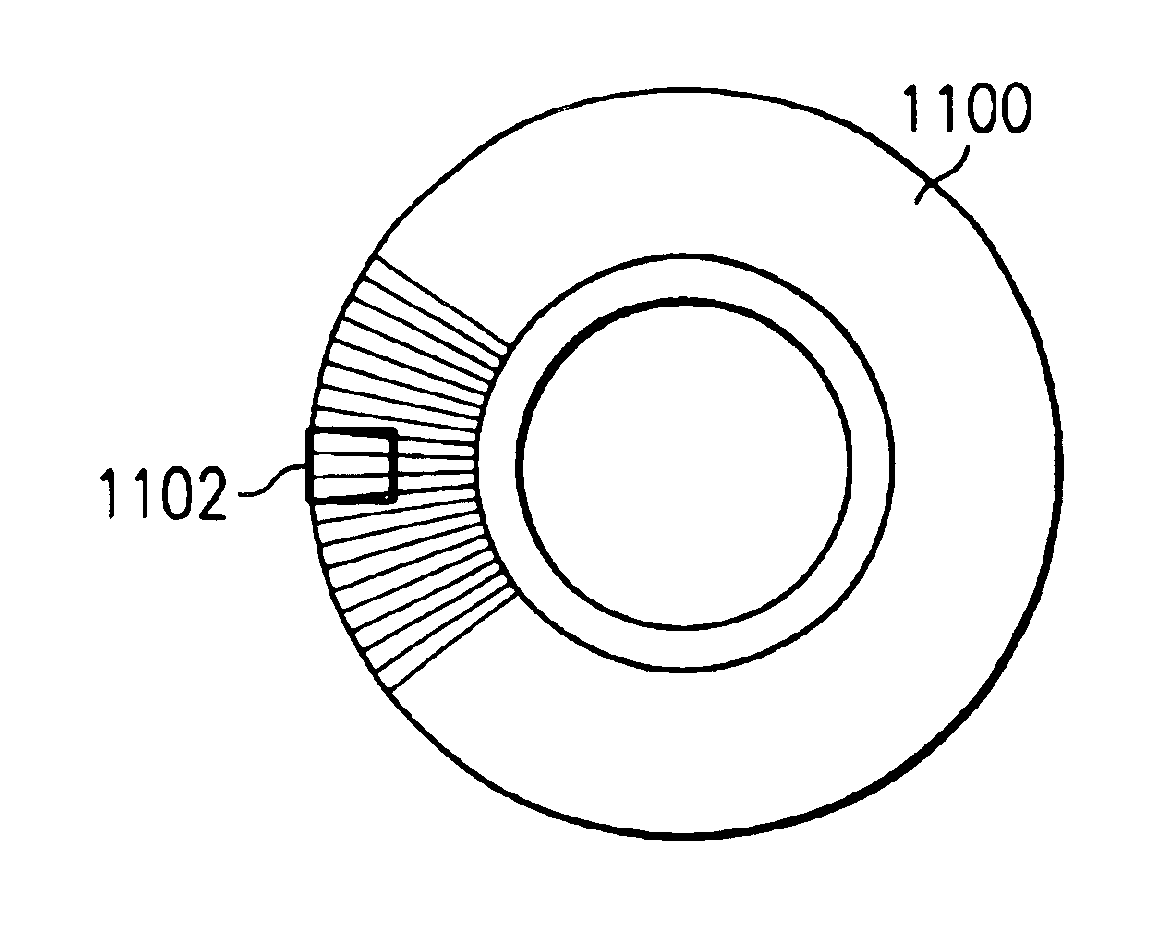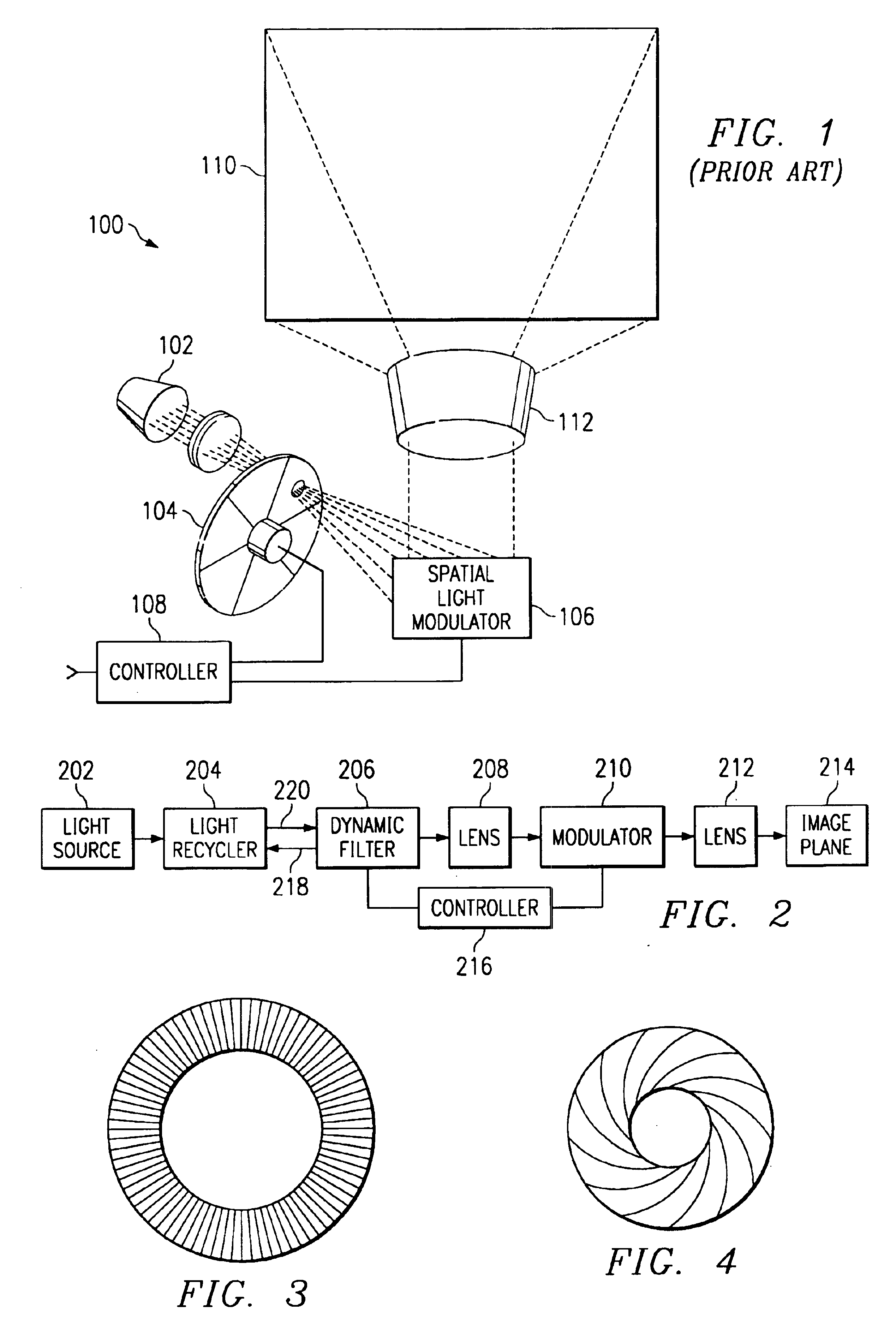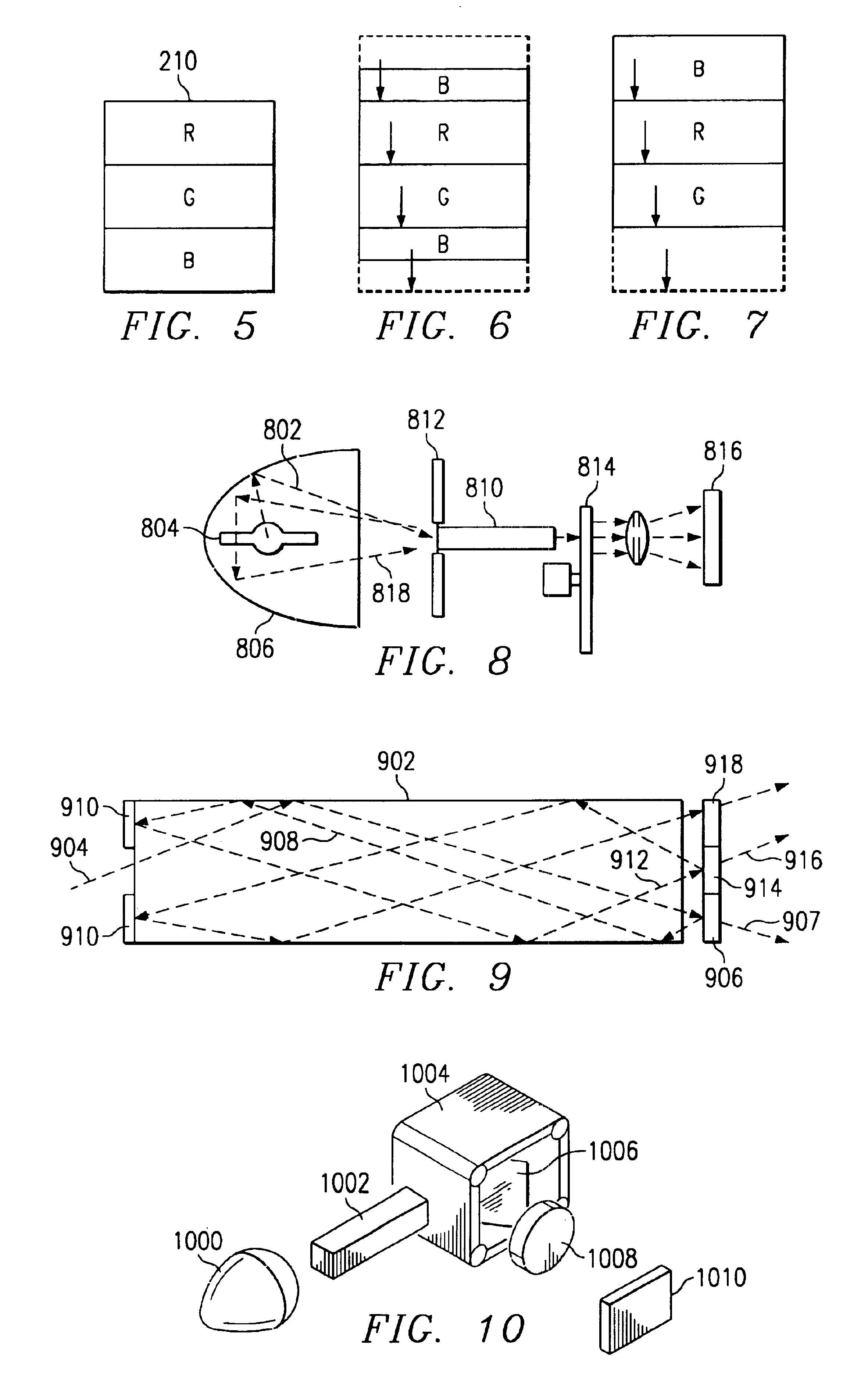Color recapture for display systems
a display system and color recapture technology, applied in the field of display systems, can solve the problems of increasing the cost, size and weight of the display system, generating additional heat that must be dissipated by larger light sources, and failing to detect pulsing, etc., to achieve the effect of three modulator panel system efficiencies, higher efficiency, and improved illumination efficiency
- Summary
- Abstract
- Description
- Claims
- Application Information
AI Technical Summary
Benefits of technology
Problems solved by technology
Method used
Image
Examples
Embodiment Construction
[0039]A new optical system and method have been developed that dramatically improve the optical efficiency of sequential color display systems. The system uses a sequential color concept called falling raster or scrolling color in which the illumination beam laterally changes color. The light rejected by the sequential filters is recycled, that is collected and presented to the filter again, increasing the efficiency of the system. Since more than one color is being displayed at a given time, light rejected by one filter segment can pass through another filter segment if it is successfully routed to another proper filter segment.
[0040]FIG. 1 is a perspective view of a sequential color display system 100. In the display system 100 of FIG. 1, light from source 102 is focused onto a spinning color wheel 104. The spinning color wheel 104 creates of beam of light that changes from one primary color to the next in rapid sequence. The primary colored beam of light impinges a spatial light ...
PUM
 Login to View More
Login to View More Abstract
Description
Claims
Application Information
 Login to View More
Login to View More - R&D
- Intellectual Property
- Life Sciences
- Materials
- Tech Scout
- Unparalleled Data Quality
- Higher Quality Content
- 60% Fewer Hallucinations
Browse by: Latest US Patents, China's latest patents, Technical Efficacy Thesaurus, Application Domain, Technology Topic, Popular Technical Reports.
© 2025 PatSnap. All rights reserved.Legal|Privacy policy|Modern Slavery Act Transparency Statement|Sitemap|About US| Contact US: help@patsnap.com



